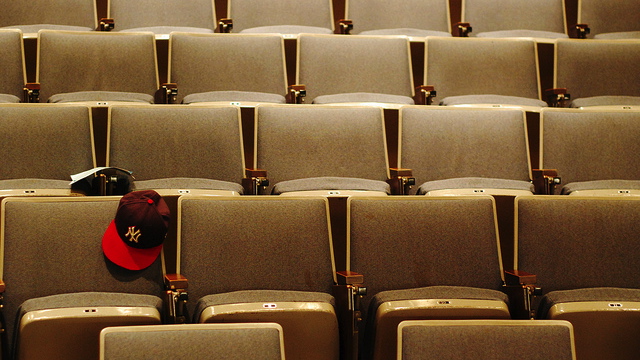Scott Aikin admits that he’s “a very conservative pedagogue.” That’s why the author and Associate Professor of Philosophy at Vanderbilt University says that, this fall, he’s asking his students to keep their laptops at home. Instead, he wants their full attention for his main method of teaching: lecturing.
“I call it ‘the chalk and talk.’ I have a piece of chalk and I talk. I fill the board with notes and sometimes diagram things or map out an argument. Students are allowed to stop and ask questions or challenge at any time, and I'll make good on answers. That's it. Students only need pens and paper for the class (if not their books, too),” he said.
Aikin’s method appears beyond retro -- some would even call it obsolete -- but Aikin says that’s fine with him. He finds being the “sage on the stage” to be most effective. “The most content-full and involved classes from my college (and even graduate) days were primarily lecture courses,” he said. “Everything I do as a lecturer now I've cribbed from those I thought effective in front of a class.”
Studies show lecturing to be an effective tool for transferring information: for example, a 2011 study of classroom teaching methods performed by Guido Schwerdt of Harvard’s Program on Education Policy and Governance and Amelie C. Wuppermann at the University of Mainz, Germany, found that larger amounts of class time lecturing increased junior high math and science students’ test scores over time spent on problem-solving activities. But the majority of higher education seems to be moving in the opposite direction, toward project-based and student-led work, especially for time spent in class.
A large reason for the shift is much of the information conveyed in a typical lecture is already available for free, at any time online, freeing up class time for more in-depth, hands-on work. Dr. Tim Lahey, infectious diseases specialist and Associate Professor of Medicine at Dartmouth’s Geisel School of Medicine, says the dilemma whether to kill the lecture is “the million dollar question in education, medical and otherwise.” One of Lahey’s main goals as head of Dartmouth medical school’s curriculum redesign is to incorporate more interactive work, what he calls the “evidence-based (and fun) teaching tools,” that he believes will revitalize medical school learning.


